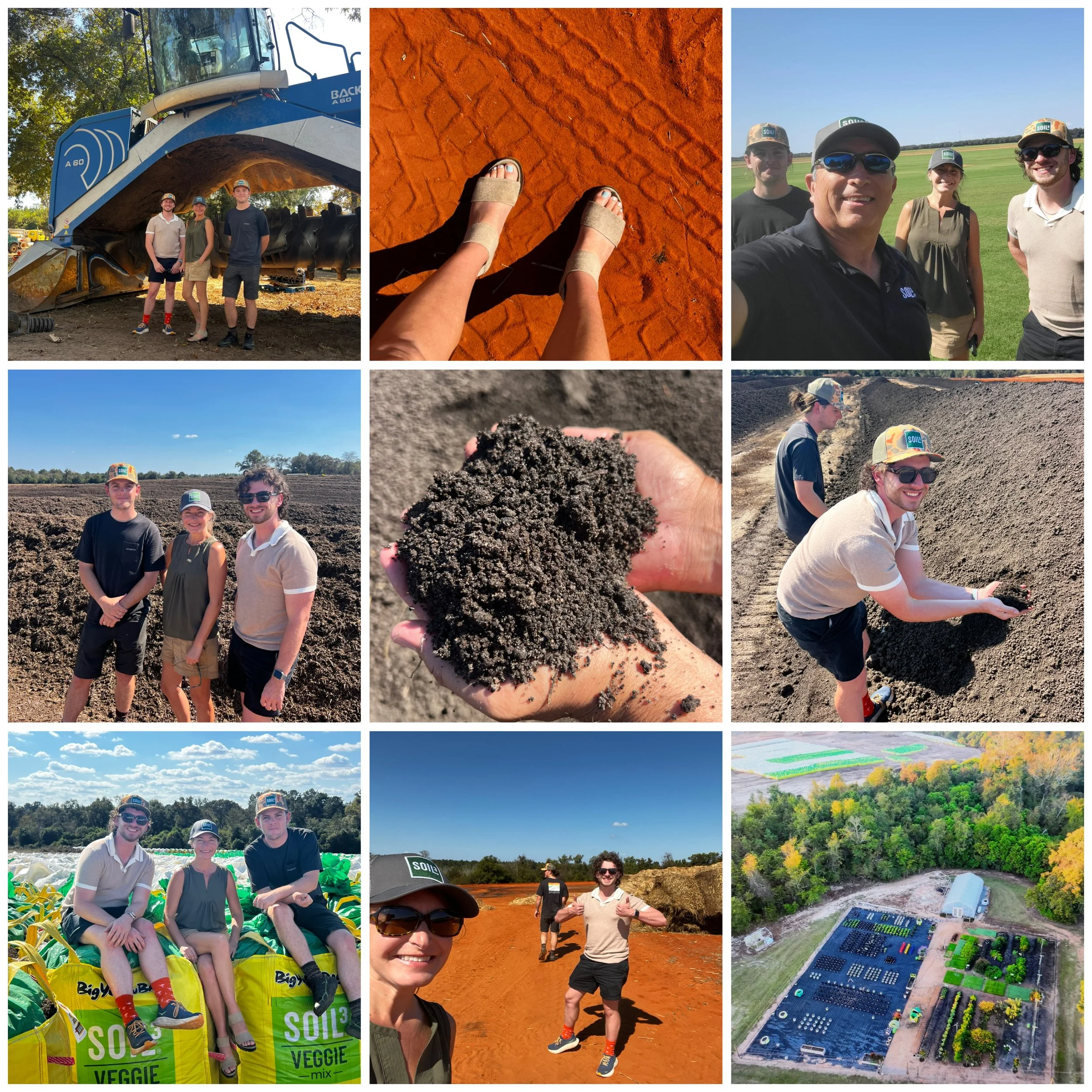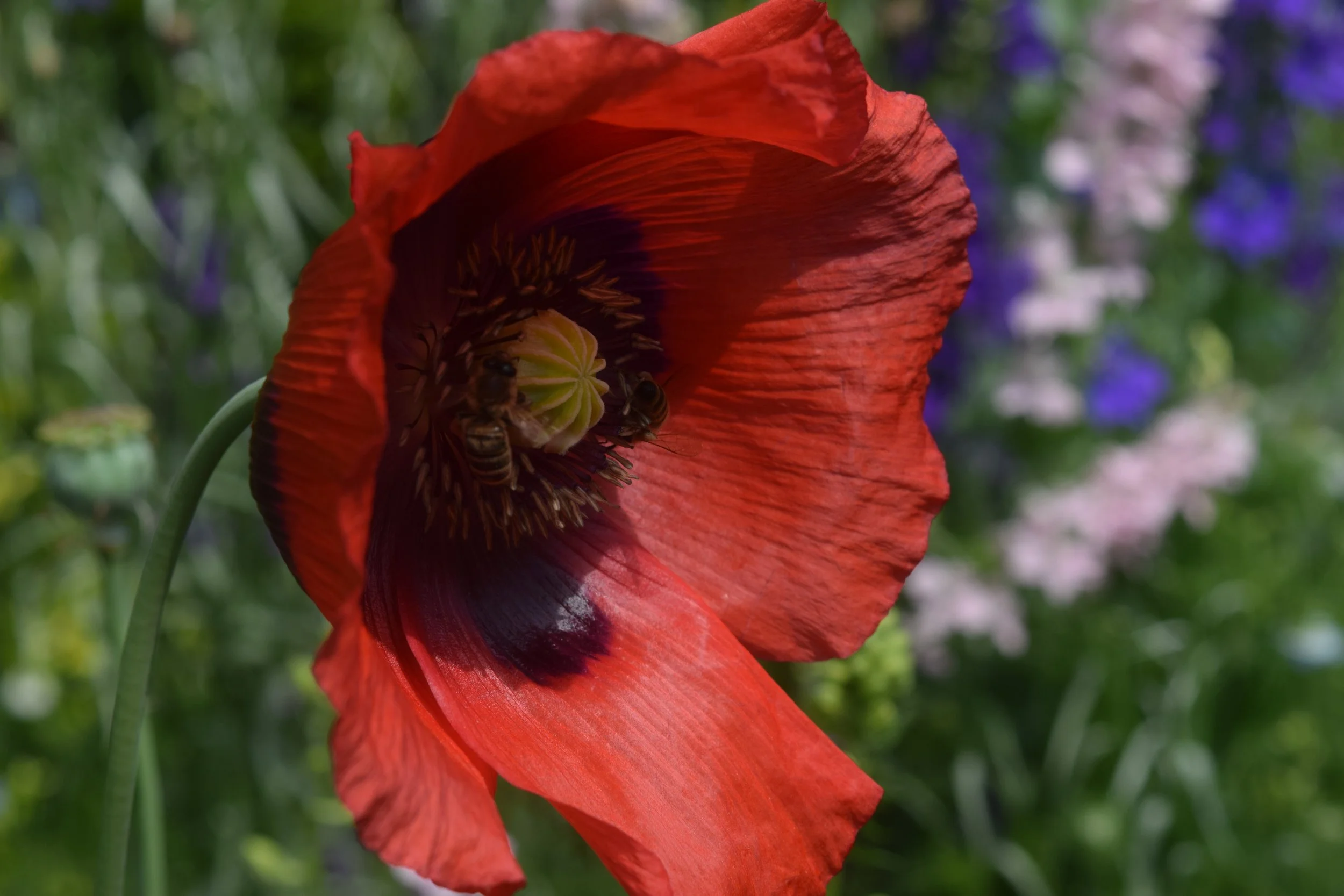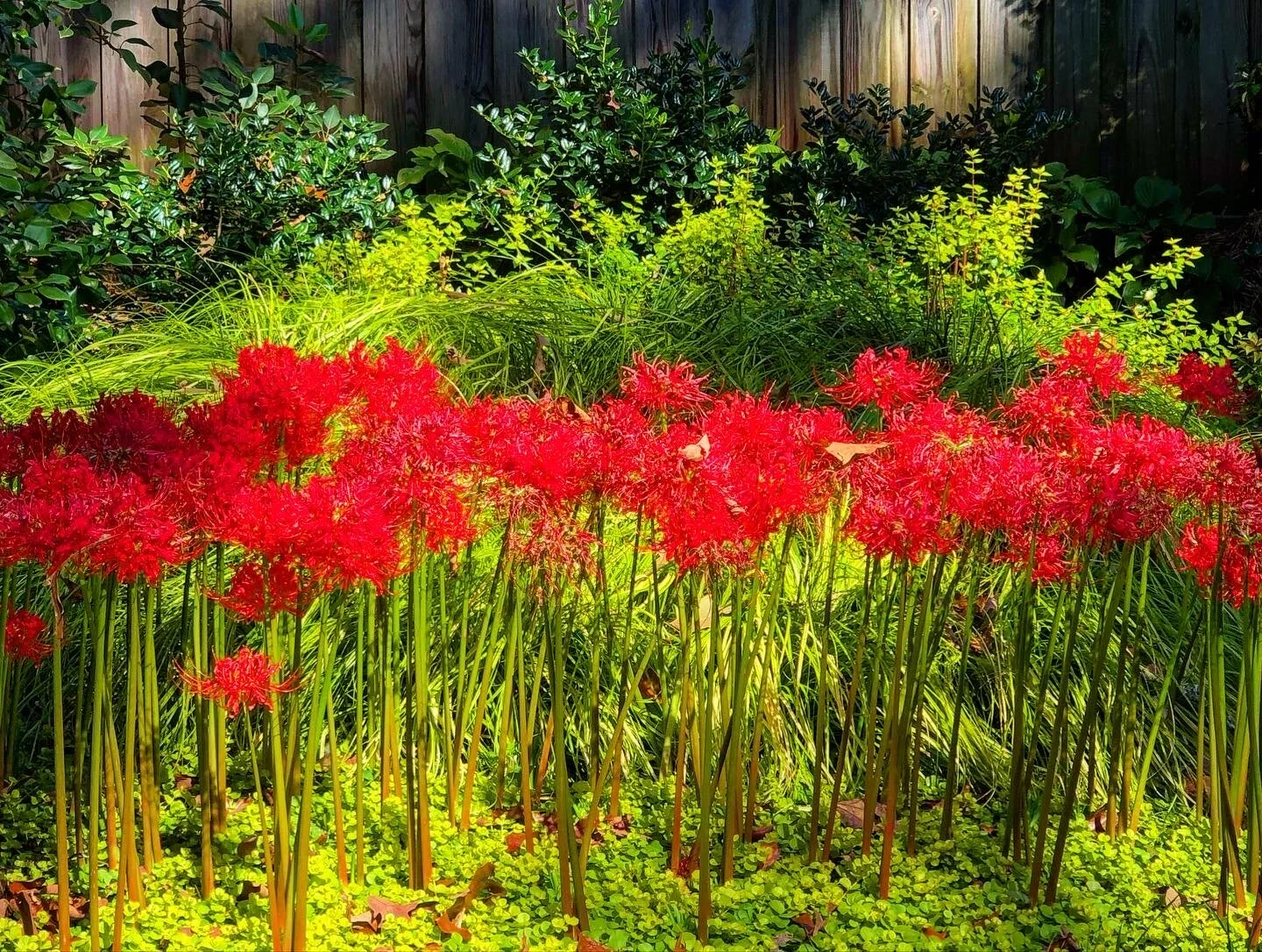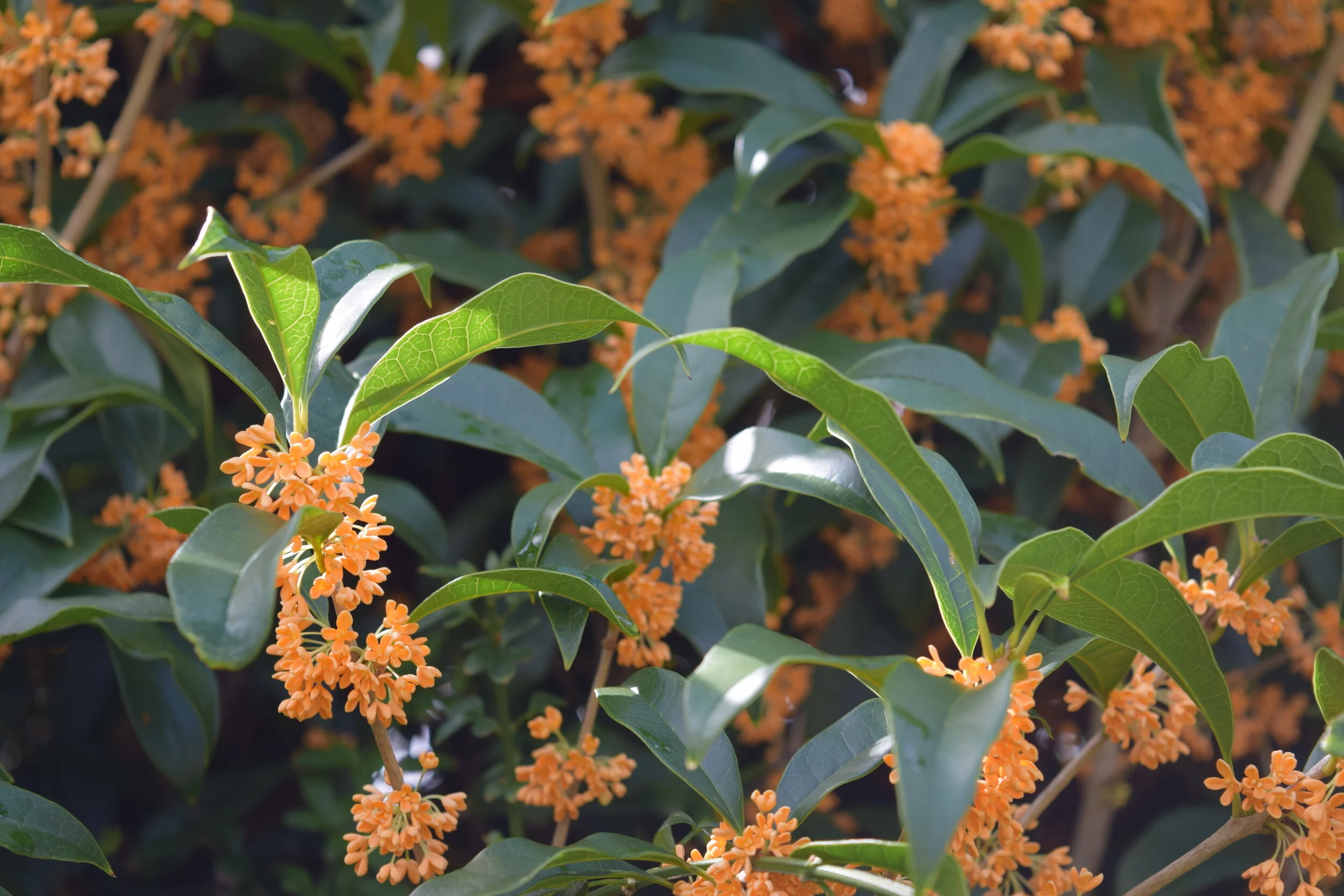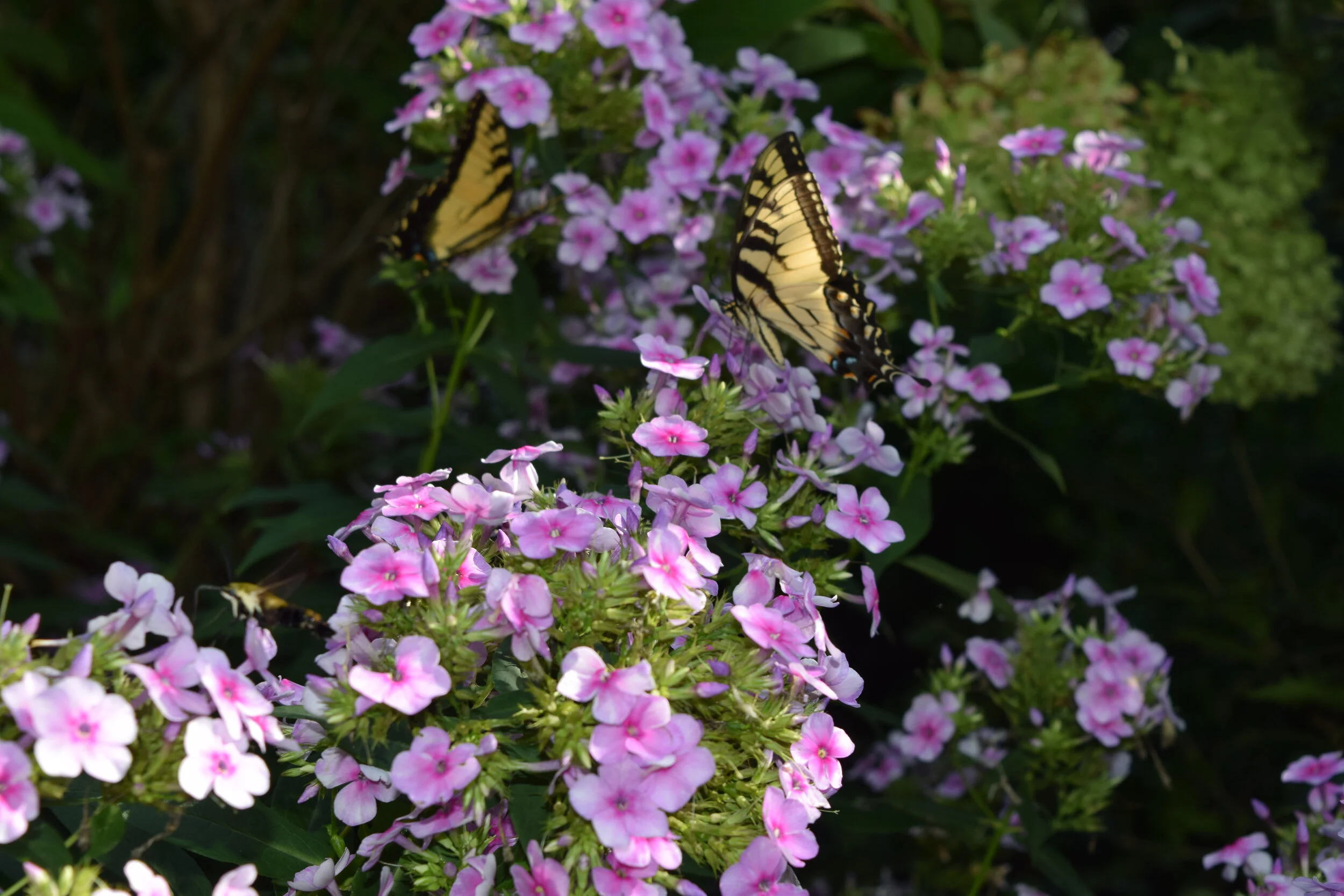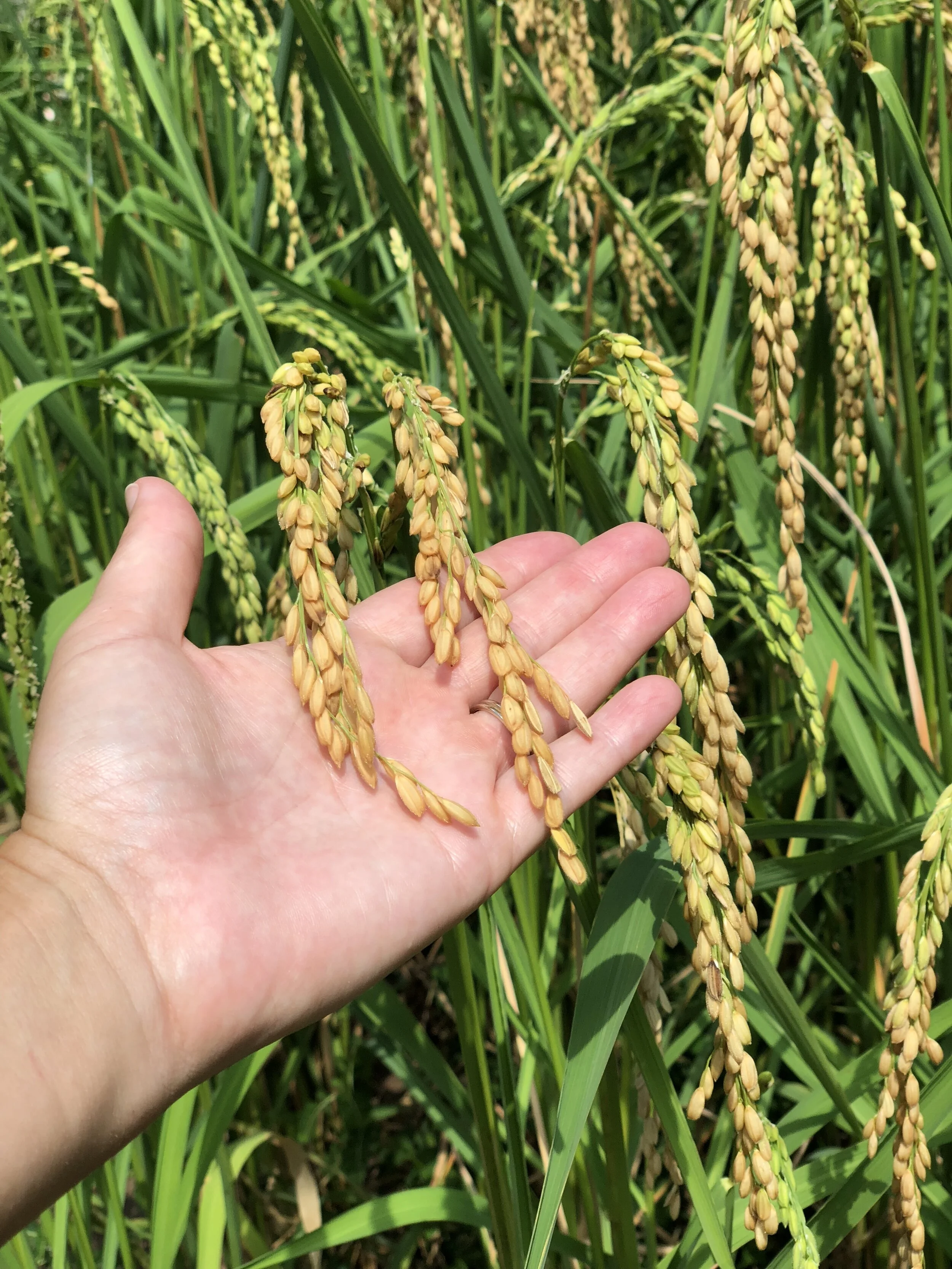Lycoris radiata is commonly known as the red spider lily, equinox flower, or naked ladies. It is a winter active bulb in the amaryllis family, Amaryllidaceae.
One of about 22 species, Lycoris radiata is likely the most common to adorn old homesteads throughout the Southern US.
Growing Cuphea
Growing Cyperus
Cyperus papyrus is a water loving herbaceous perennial native to Africa. In its native environment it grows in full sun, in flooded swamps and on lake margins throughout Africa, Madagascar, and the Mediterranean countries. Though most think it is grass, it is actually a sedge, like carex, and is part of the Cyparaceae family.
Growing Lespedeza
Growing Brugmansia
Best grown in sunny areas of Zones 7 and warmer, Brugmansia develop woody stems and can grow into trees, shrubs, or die back perennials depending on where you live. Here they are die back perennials and grow to 8’ tall annually!
The large, pendulous, fragrant flowers give lead to their common name of “Angels Trumpet” which leads to confusion because Datura is also commonly referred to that. Datura have big white blooms and a lower growing habits, though they are both in the nightshade family.
Growing Gomphocarpus
Growing Dawn Redwood
I was first introduced to this tree as an intern, 20 years ago, while weeding out an abundance self sown seedlings. Having no idea of it’s history, my boss asked me to do some research and prepare a plant profile so I’d have a better appreciation for this majestic specimen.
The name Metasequoia, means “like Sequoia” a reference to it’s cousin the redwood. This genus was first described in 1941 from Mesozoic Era fossils which were about 150 million years old.
Growing Tea Olives
There are “about” 30 different species of Osmanthus, mostly native to Asia. They range in size, habit, flower, and fragrance. I am charmed by all aspects of this genus.
Ten years ago, while working as a propagator specializing in Asian native broadleaf evergreens, I became obsessed with collecting and producing EVERY Osmanthus species and variety that I could find. They root easily from cuttings and are well suited for landscapes in zones 7-9. At one point I had 20+ selections in my home garden! Though a few have died during extreme cold spells, most are thriving... and starting to remind me of the benefits of short days!
Growing Sesame
Have you ever grown sesame?
Probably the most underutilized plant of this era, sesame is hands down my favorite summer annual. I first saw this planted at Monticello and was immediately fascinated. I had never seen sesame before; in fact, I don’t think I had ever thought about sesame as a plant. It was just that seed on hamburger buns. Once I saw it I feel deeply in love and wouldn’t be satisfied until I grew it myself. After all, if Thomas Jefferson thought it was a garden worthy plant, who was I to not follow his lead?
Summer tour of Dr. Denny Werner's garden
When you think of pollinators, bees are probably first to come to mind. But there are a lot of different creatures who provide this important service. A pollinator is any animal, most often and insect, that carries pollen from the male to the female parts of flowers for reproduction. This process of moving pollen is usually done while creature is feeding and flying from plant to plant.
Sunflowers at Sunset: an escape from the everyday
Helianthus annuus, also known as sunflowers, is an annual plant with a large daisy-like flower face. It is in the Asteraceae plant family, just like daisies, coneflowers, and other composite type flowers. The scientific name comes from the Greek words helios (“sun”) and anthos (“flower”).
Traditional sunflowers are bright yellow with brown centers that ripen into heavy heads, filled with seeds that birds love! My favorite traditional form is called ‘Mammoth Grey’ as the plants grow tall and the seeds are abundant.
Fragrant Ginger Lilies
Do you grow ginger lilies? When I moved to NC 18 years ago I worked as an estate gardener at a 100 acre paradise, Montrose Gardens in Hillsborough, NC. This is where I and had my first encounter with the amazing Hedychium coronarium. The heavy fragrance was instantly put into my scent memory to mark the start of September.
Mid August Foodscape Update
Somehow 2020 is marching along and my favorite season, summer, is passing far too quickly. I noticed the days considerably shorter, the nights much cooler and my shadow is getting long.. yes we are just a month from autumn equinox and I want to cherish every single minute I have left with the summer season.
New Front Sidewalk- ten years in the making
Easy Recipes for Preserving Summer Tomato Harvests
It is tomato season here in my zone 7 foodscape in central North Carolina. This is the time of year where I spend less time in the garden planting and more time in my kitchen processing and preserving my summer harvests to ensure we will have delicious meals all year long. I have included all of my favorite tomato based recipes for you!
The Hornworm Controversy
Replanting the side property border for summer- in mid July!
The side property border is finally planted for the 2020 summer growing season! This garden produces hundreds of pounds of food each season and serves an important role in ecosystem development and pollinator habitat. By seamlessly weaving trees, shrubs, perennials and annual flowers and food crops together, this foodscape truly offers year round beauty and bounty.
Behind the Scenes Filming for Growing A Greener World Season 11
June 2020 started with a bang! We had the pleasure of hosting Joe Lamp’l and the Growing A Greener World team to film TWO episodes for the upcoming 11th season on PBS. What a joy to professionally film an episode on my passion: foodscaping! We covered all the essential information to teach ANYONE how to foodscape. From site selection, crop rotations, soil preparation and everything in between this episode will be one not to miss!
Growing Rice
When I tell people, I grow rice I am always met with looks of mystification. Most people have never seen a rice plant growing despite the reality that we have ALL eaten it! And in the past two months, rice has disappeared from grocery store shelves, leading to a sudden interest in cultivating this little-known crop.
Feelin Blue? Floating flowers may help
If you are anything like me, you have probably been seeking refuge from reality in your garden the past two months. Everyday, when I step outside into my “playground” I reflect with gratitude for the many blessings in my life. Even so, it can be hard to not be impacted by the reality our world is facing. As I have said before, I have no answers, but I sincerely hope that these short-and-sweet blog posts can bring you some peace and joy and maybe inspire you to go outside and create something new. Hope springs eternal, especially in the garden.




